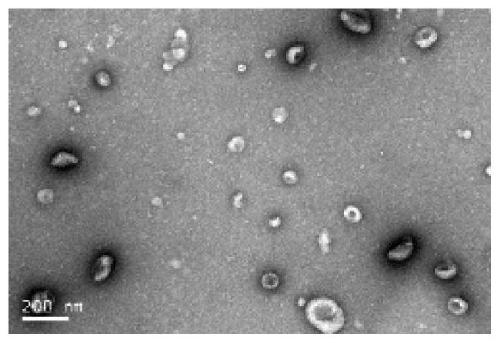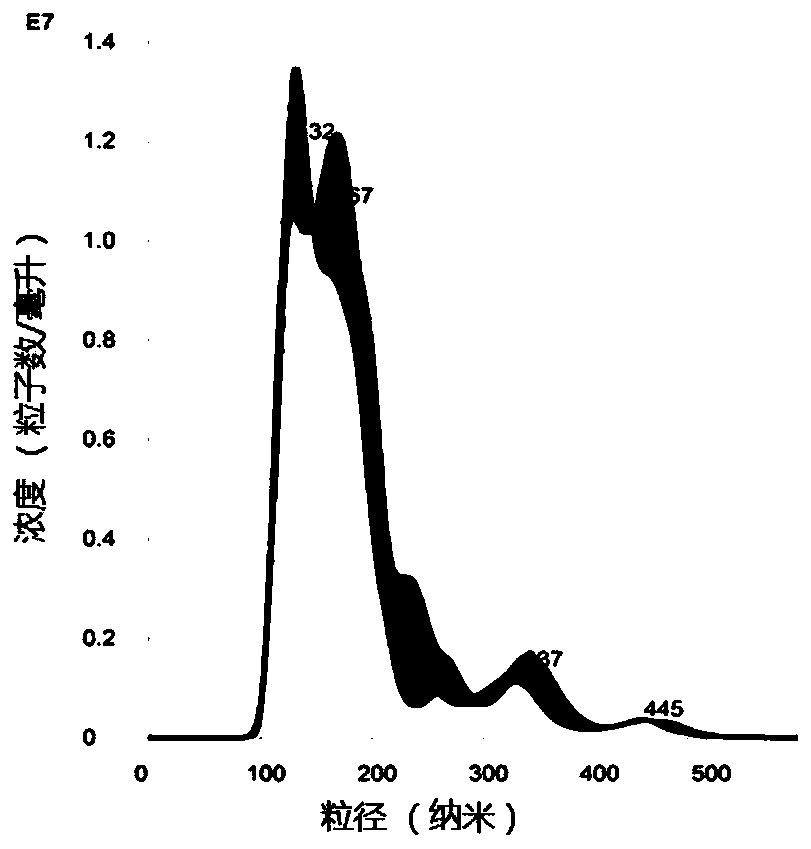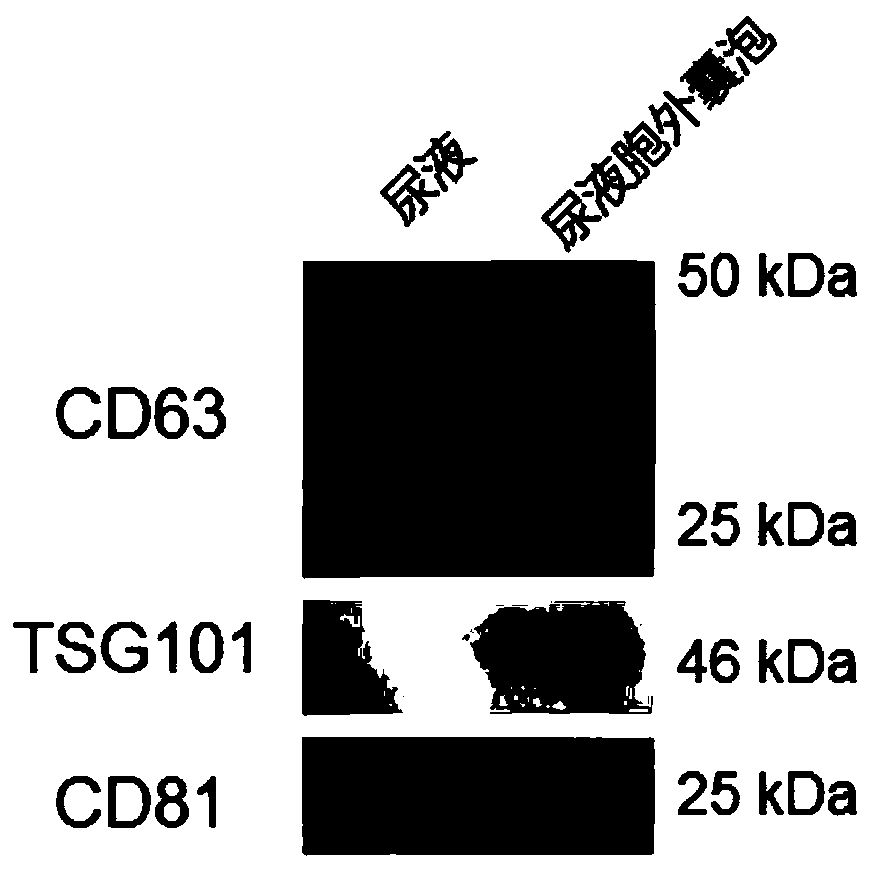Separation method of EVs (extracellular vesicles)
A separation method and vesicle technology, applied in the biological field, can solve the problems of expensive, expensive ultra-high-speed centrifuges, and low purity of extracellular vesicles
- Summary
- Abstract
- Description
- Claims
- Application Information
AI Technical Summary
Problems solved by technology
Method used
Image
Examples
Embodiment 1
[0058] 1) Centrifuge 6ml of freshly obtained urine at 10,000rpm for 10min. The precipitate is the cells and impurities in the urine. Remove the precipitate and take 5ml of the supernatant.
[0059] 2) Take 5 mL of the supernatant obtained in step 1) and add it into a 300 kDa dialysis bag. The electrophoresis solution is an aqueous solution of glycine and Tris, and the electrophoresis is performed under the electrophoresis condition of 300mA (Tianneng, EPS600) for 2 hours, and the electrophoresis solution is replaced every 0.5 hours and the electrophoresis direction is changed.
[0060] 3) Add 5ml of the urine extracellular vesicle fluid obtained by dialysis in step 2) (i.e. the solution in the dialysis bag) into a 100kDa ultrafiltration tube, and perform ultrafiltration at 3500rpm for 10min to further concentrate the sample to provide concentrated urine Liquid extracellular vesicles.
[0061] The obtained urine extracellular vesicles were characterized using a transmission el...
Embodiment 2
[0065] 1) Centrifuge 6ml of freshly obtained saliva at 10,000rpm for 10min. The precipitate is the cells and impurities in the saliva. Remove the precipitate and take 5ml of the supernatant.
[0066] 2) Take 5 mL of the supernatant obtained in step 1) and add it into a 300 kDa dialysis bag. The electrophoresis solution was an aqueous solution of glycine and Tris, and the electrophoresis was performed under the electrophoresis condition of 300mA (Tianneng, EPS 600) for 2 hours, and the electrophoresis solution was changed every 0.5 hours and the electrophoresis direction was changed.
[0067] 3) Add 5ml of the saliva extracellular vesicle fluid obtained by dialysis in step 2) (i.e. the solution in the dialysis bag) into a 100kDa ultrafiltration tube, and perform ultrafiltration at 3500rpm for 10min to further concentrate the sample to provide concentrated saliva Extracellular vesicles.
[0068] The obtained salivary extracellular vesicles were characterized by transmission ele...
Embodiment 3
[0072] 1) Centrifuge the freshly obtained blood at 4000rpm for 10min to obtain serum, and then centrifuge at 10000rpm for 15min to remove the precipitate to obtain the serum supernatant.
[0073] 2) Dilute 0.4 ml of serum supernatant obtained in step 1) to 5 ml with electrophoresis solution.
[0074] 3) Take 5 mL of the diluent obtained in step 2) and add it into a 300 kDa dialysis bag. The electrophoresis solution is an aqueous solution of glycine and Tris, and the electrophoresis is performed for 2.5 hours under the electrophoresis condition of 300mA (Tianneng, EPS600), and the electrophoresis solution is replaced every 0.5 hours and the electrophoresis direction is changed.
[0075] 4) Add 5ml of the serum extracellular vesicle fluid (ie the solution in the dialysis bag) obtained by dialysis in step 3) into a 100kDa ultrafiltration tube, and perform ultrafiltration at 3500rpm for 10min to further concentrate the sample to provide concentrated serum Extracellular vesicles. ...
PUM
| Property | Measurement | Unit |
|---|---|---|
| particle diameter | aaaaa | aaaaa |
| particle diameter | aaaaa | aaaaa |
| particle diameter | aaaaa | aaaaa |
Abstract
Description
Claims
Application Information
 Login to View More
Login to View More - R&D
- Intellectual Property
- Life Sciences
- Materials
- Tech Scout
- Unparalleled Data Quality
- Higher Quality Content
- 60% Fewer Hallucinations
Browse by: Latest US Patents, China's latest patents, Technical Efficacy Thesaurus, Application Domain, Technology Topic, Popular Technical Reports.
© 2025 PatSnap. All rights reserved.Legal|Privacy policy|Modern Slavery Act Transparency Statement|Sitemap|About US| Contact US: help@patsnap.com



